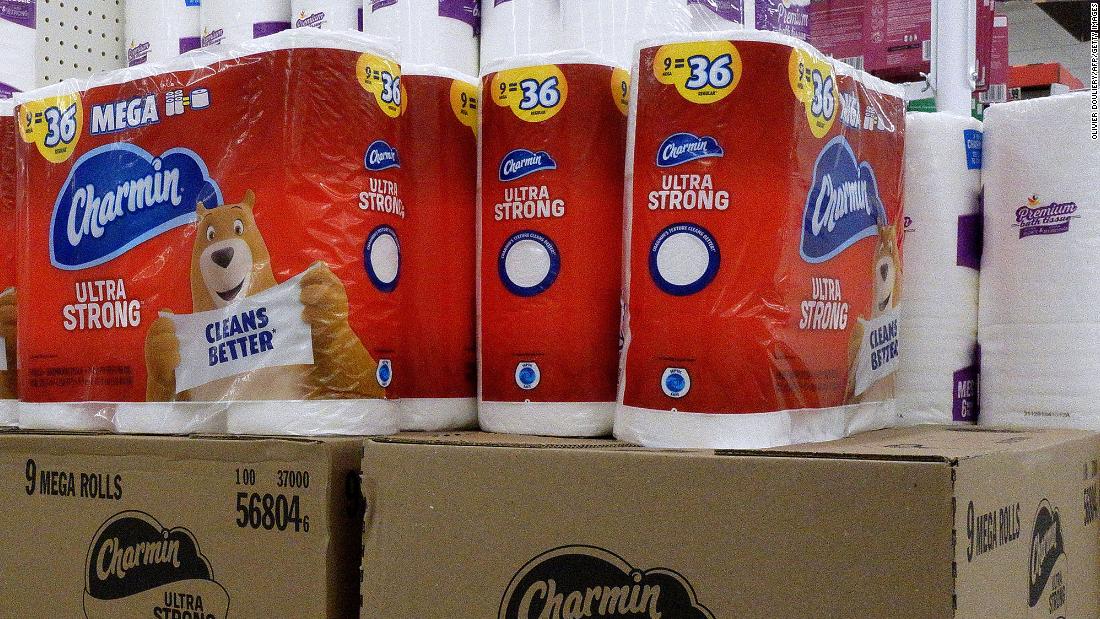The toilet paper roll is getting thinner, there are fewer cookies in a bag and less conditioner in the packaging.
The changes are subtle and could evade less demanding buyers. But retail industry experts say we could see more consumer products start to shrink in size or quantity, or both, due to rising costs.
Record levels of inflation mean households are paying more for everyday purchases and it is costing businesses more to produce packaged goods such as paper products, shampoos, food and drinks.
Companies can raise prices, and many do. Others charge customers the same price and offer less.
Product shrinkage, also known as “shrink inflation,” is happening with the toilet paper roll, said Edgar Dworsky, a former assistant attorney general in Massachusetts, a consumer advocate and publisher of the ConsumerWorld website.
“The downsizing happens in times of high inflation because companies that make everyday products also pay more for raw materials, production and delivery costs,” said Dworsky, who is tracking how the period of high inflation impacts consumer products. consumption for three decades.
Dworsky said product downsizing is becoming more prevalent, and recently spotted several instances of brands discreetly downsizing their products.
For example, Procter & Gamble’s Charmin ultra-soft toilet paper 18-count mega-pack now contains 244 double-ply sheets, down from the previous 264 double-ply sheets per roll. And the brand’s super mega rolls now display 366 sheets versus 396 sheets per roll previously.
“That equates to losing the equivalent of about a roll and a half in the new 18-pack,” he said.
Dworsky noted that oversized packages of toilet paper are most often stocked in stores. “It’s almost impossible to find a four-pack,” he said.
Although he doesn’t track product prices, Dworsky said that when a product is downsized, consumers end up paying more for less product or the same price but less.
“This doesn’t mean that all Procter & Gamble toilet paper products will see a change. But I guess there will be changes to more products,” he said, adding that he will have a report on other toilet paper brands coming soon.
In its most recent earnings call, Procter & Gamble executives acknowledged that the company was facing a “challenging cost environment” due to the ongoing effects of the pandemic on supply chains, a tight labor market and that “the availability of materials is still limited.
Consequently, P&G said it was raising prices for its retail customers in 10 product categories, including detergents, dryer sheets, baby and women’s care products.
In an email to CNNBusiness, Procter & Gamble pointed to several reasons for variations in its product sizes and that store prices are determined solely by retailers.
“There is a cost element to innovation – adjusting the count per pack or pack size is a way to reinvest in this innovation while maintaining a competitive price,” the company said.
P&G said it also tailors product sizes to different retailers. Therefore, the rolls may have shrunk in some stores, but not in others.
“In the same retailer, the range of products you find in a suburban location may vary from what you find in a smaller urban retail location, and compared to what you find on a retailer’s website,” he said.
Why does “contraction inflation” occur?
The phenomenon of “shrinkflation” or contraction inflation is nothing new. The practice is often triggered when inflation rises and business costs rise.
When costs rise, manufacturers look for ways to offset the increases they pay for commodities, transportation, labor, and other expenses. Either they increase the prices of existing products or they reduce the size of existing products, which increases the price per unit of what you get.
Those increases are passed on to shoppers through stores, who buy products from consumer goods companies.
Other recent examples of reduced products that Dworsky noted were Keebler cookies. He said the Deluxe Chips with M&Ms package had dropped to 9.75 from the previous 11.3 ounces per package.
Shoppers alerted him to new Gatorade bottles that hold less drink (28 fluid ounces minus 32 fluid ounces) and a change in Pantene conditioner packaging to a slimmer tube that also holds two fewer ounces of the product.
“For consumer products companies, raising prices for consumers is a last resort. That’s because price increases in stores are very noticeable to shoppers and can influence demand,” said Mark Cohen, Director of Retail Studies and Adjunct Professor at Columbia University Business School.
Instead, companies make subtle adjustments to products and packaging. “For consumers, this is kind of an annoyance … or a concern depending on what product we’re talking about,” Cohen said. “I think inflation will be here for a while and we will see such product adjustments continue to happen.”

